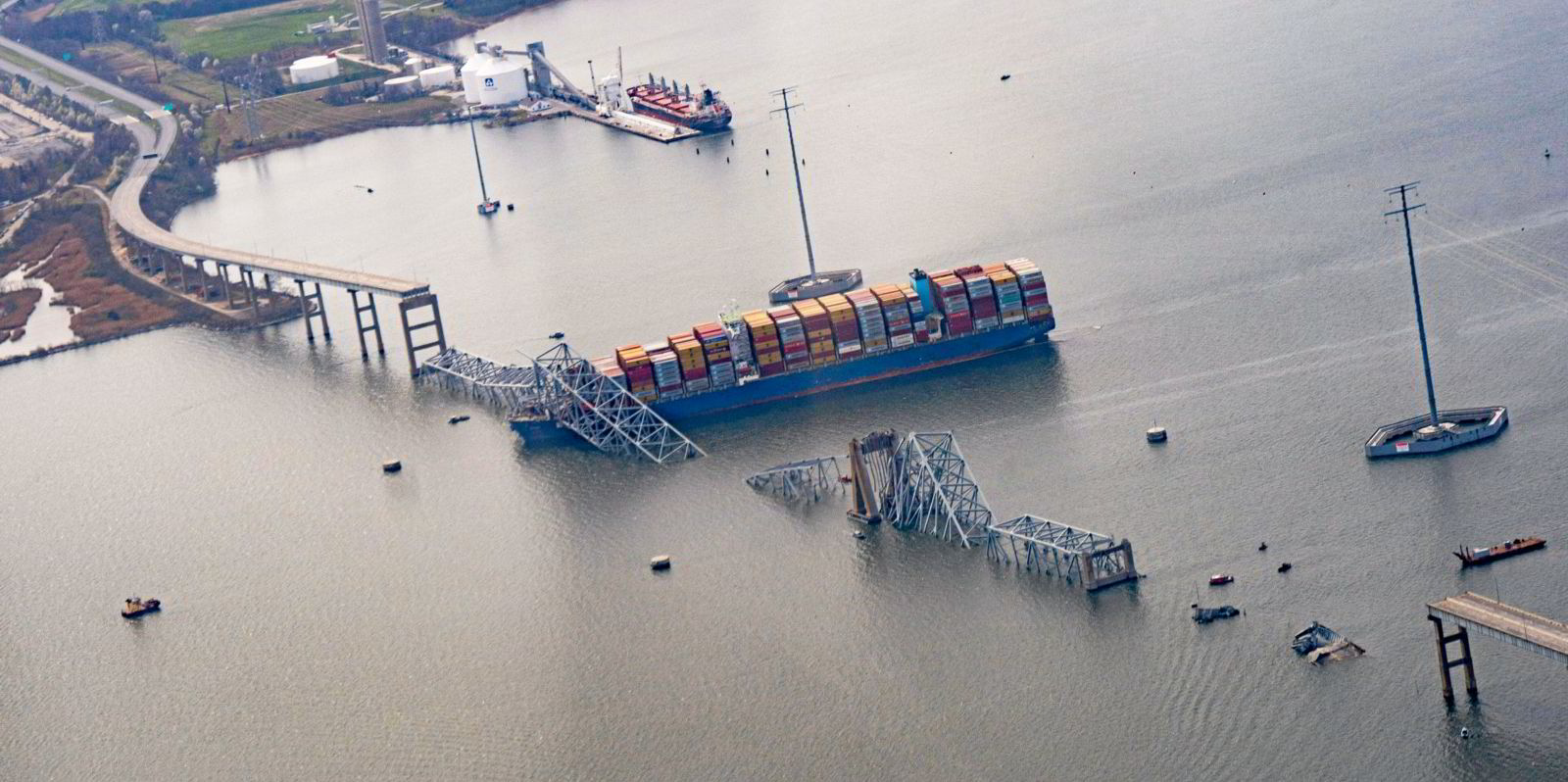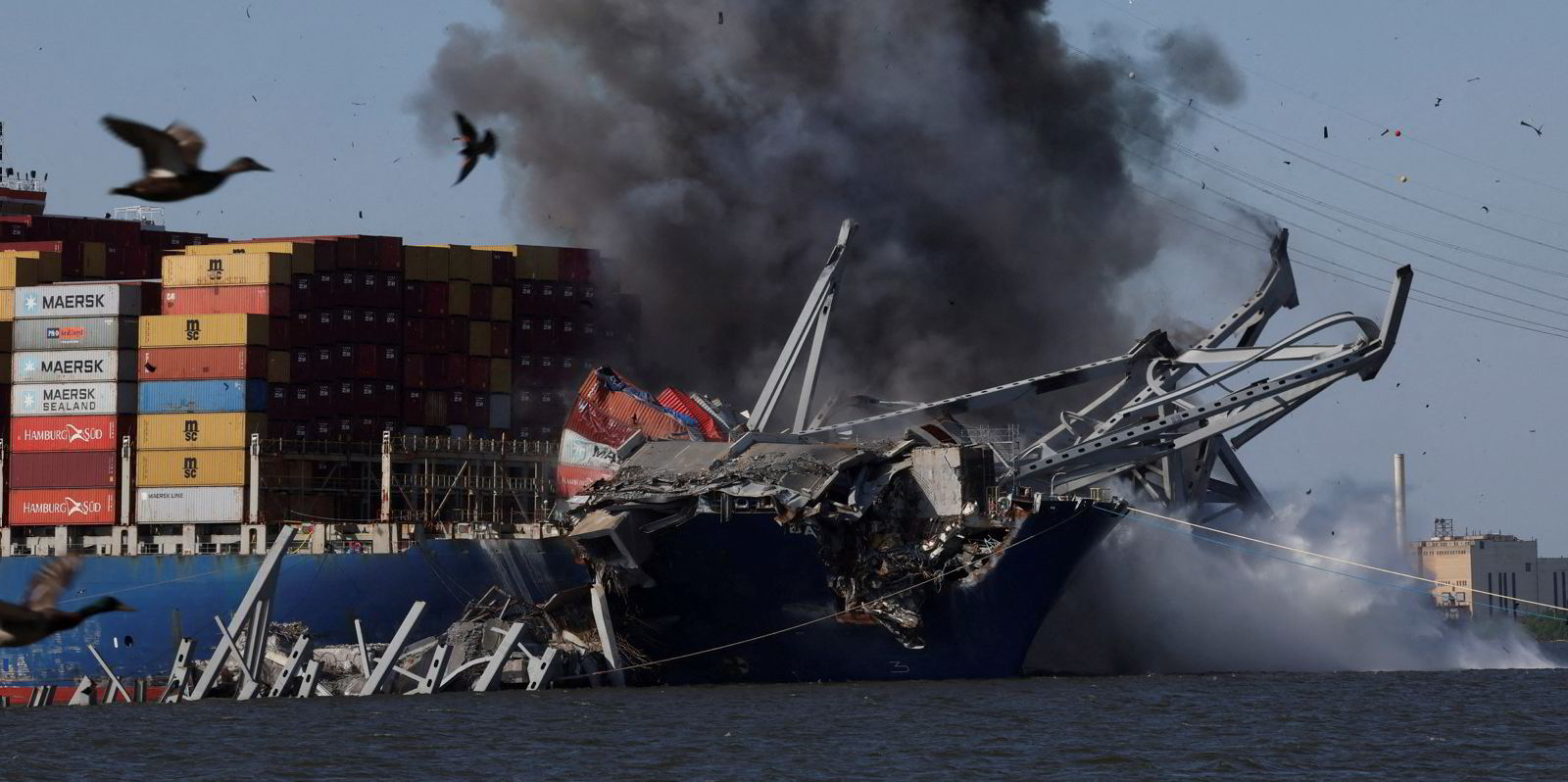The container ship Dali suffered two electrical blackouts less than five minutes before it struck and brought down the Francis Scott Key Bridge in Baltimore, according to a preliminary accident report.
The US National Transportation Safety Board reported the 9,962-teu Dali (built 2015) also suffered two blackouts 10 hours before it left port after a crew error resulted in the reconfiguring of the electrical system on the ship.
The investigation is continuing to explore whether the changes to the ship’s systems had a potential impact on the two later blackouts. They started just three ship-lengths from the bridge leaving crew and pilots with little time to avoid the collision, according to the 24-page paper.
Six construction workers died when a portion of the bridge collapsed into the river after the Singapore-flagged Dali hit the bridge on 26 May. The crash is expected to be the most costly maritime casualty, with an estimated bill of $2bn to $4bn, according to preliminary estimates.
The report revealed that a senior Maryland pilot asked the master about the condition of the Dali before it left and he replied that the “ship was in good working order”, the report said.
The city of Baltimore has sued the owner and operator, Grace Ocean and Synergy Marine Group, over the damage, claiming that the ship was not seaworthy when it left the Seagirt Marine Terminal at about 00:36 local time en route to Colombo, Sri Lanka.
The Dali, laden with 4,680 containers, was helped by two tugs, which were let go at about 1:07 local time after the ship entered the main shipping lane.
The senior pilot handed the ship over to an apprentice pilot and it was travelling “slow ahead” at 01:25 local time about 1 km from the bridge when electrical breakers unexpectedly tripped, causing a loss of electrical power.
The loss of power led to the main engine automatically shutting down and stopped the rudder from moving, the report said.
The crew said electrical power was quickly restored but the engine was not restarted and the rudder had limited effect.
The pilots called for help from the tugs, but one was already nearly 5 km away and did not have time to get back to the ship before it struck the bridge, the report said.
A second brief blackout happened at 01:27 local time, less than 350 metres from the bridge when the pilots ordered the anchor to be dropped.

Little more than two minutes later, the ship hit the bridge while the anchor was still being lowered and the engine was not working.
“A Dali crew member, who was on the bow at the time of the accident, told investigators that, as he was releasing the brake on the port anchor, he had to escape from the falling bridge before he was able to reapply the brake,” said the report.
Another crew member also suffered minor injuries while escaping the debris.
The report also detailed the remarkable escape of two workers who had been on the bridge.
After the bridge was struck, one inspector ran and made it to the nearest surviving span before the rest collapsed. Another worker managed to free himself from his truck that fell into the water and was rescued by a boat.
The focus of the inquiry now appears to be the changes made after the blackouts in port 10 hours before the ship left for sea.
“The [National Transportation Safety Board] is still investigating the electrical configuration following the first in-port blackout and potential impacts on the events during the accident voyage,” said the report.
Read more
- P&I Clubs face cost spike as battle over Baltimore bridge disaster rumbles on
- Two UK-listed insurers confirm exposure to Baltimore bridge disaster
- Insurer of Baltimore bridge set to ‘pay out $350m’ over Dali disaster
- Channel closes after first container ship arrives at port of Baltimore
- Magazine publisher lodges class-action Dali claim as deep-draught channel opens
- Small general cargo ship becomes first to transit Baltimore channel after bridge collapse




